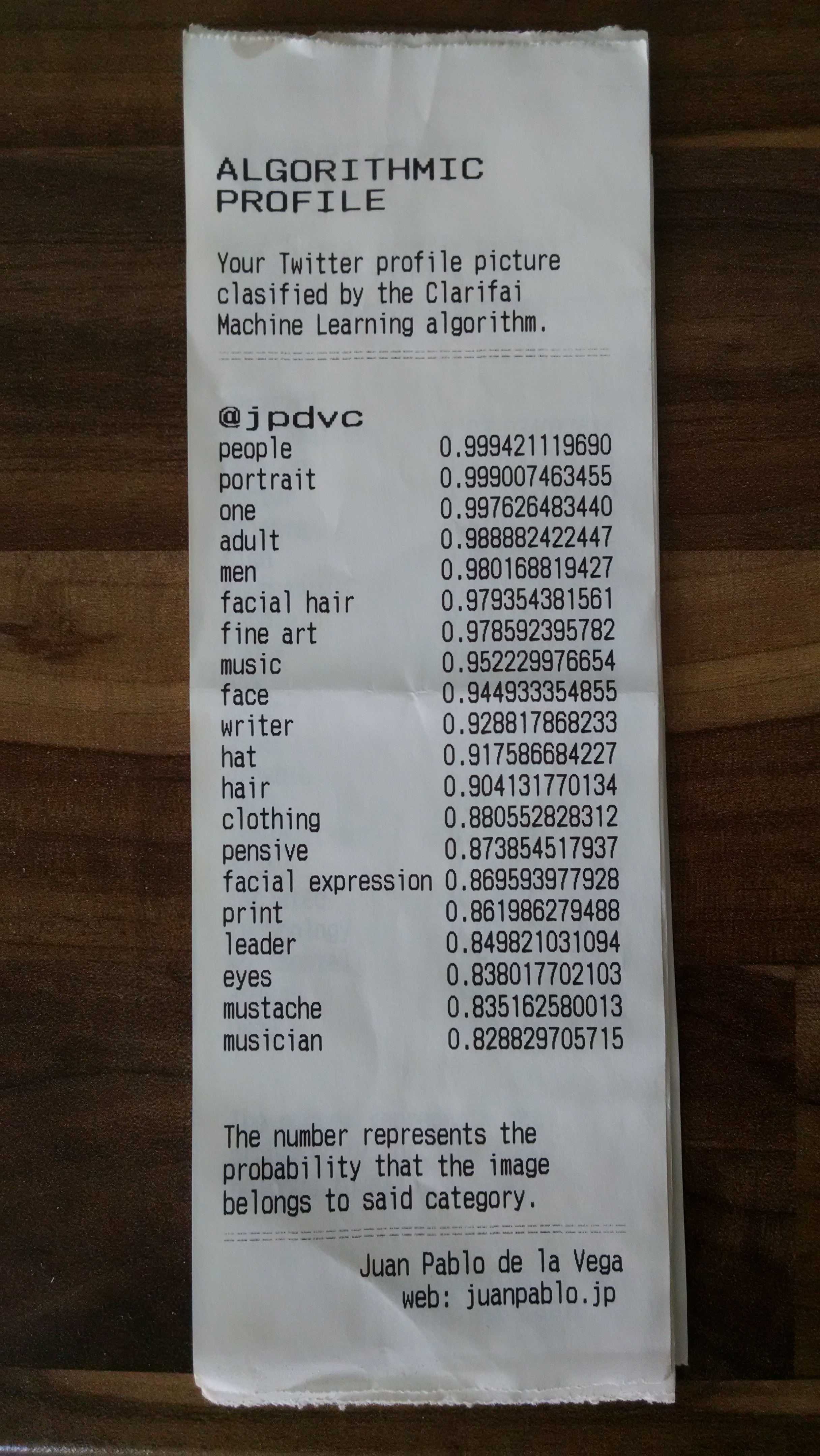Machinic Profile
Machines whose aim is to learn all the time from whichever data they can gather are around us all the time. From smartphones to Oyster cards, we live in a society that now idolises the way information can be harvested from almost any source and collects it in the hopes of somehow making sense of it to maximise profit. In his book Profiling Machines,Elmer (2003) gives a good account of how our personal information is used in this way and the implications this has in the economic, political and social spheres. Yet all of this starts as an abstraction, a problem that falls on one clever engineer —or rather a group of engineers— who decide to tackle it by developing sophisticated algorithms drawing from tools that range from basic statistical analysis to advanced linear algebra and functional analysis; Kitchin (2014) would describe this ecosystem as big data. One major issue in this field is that knowledge generation has stopped being solely a public, or scientific, affair and a large amount of the research is being done behind closed doors in private corporations. So not only are the developed algorithms complex per se, their profitability rests on them not being disclosed; the darker the box, the less likely someone else will be able to scrape profit off it. The goal of this project was to give a visual representation of how machines are being used to automatically categorise our information and at the same time to try to shed some light into the black box that a machine learning algorithm can be.
A Twitter crawler was programmed to gather information from over 50,000 accounts and then the images were run through the Clarifai deep learning algorithm. Over 4,000 categories given by the algorithm were stored in a database which amounted to over one million data points. Then, relationships between the categories were calculated and each of them was displayed alongside those closest to it.
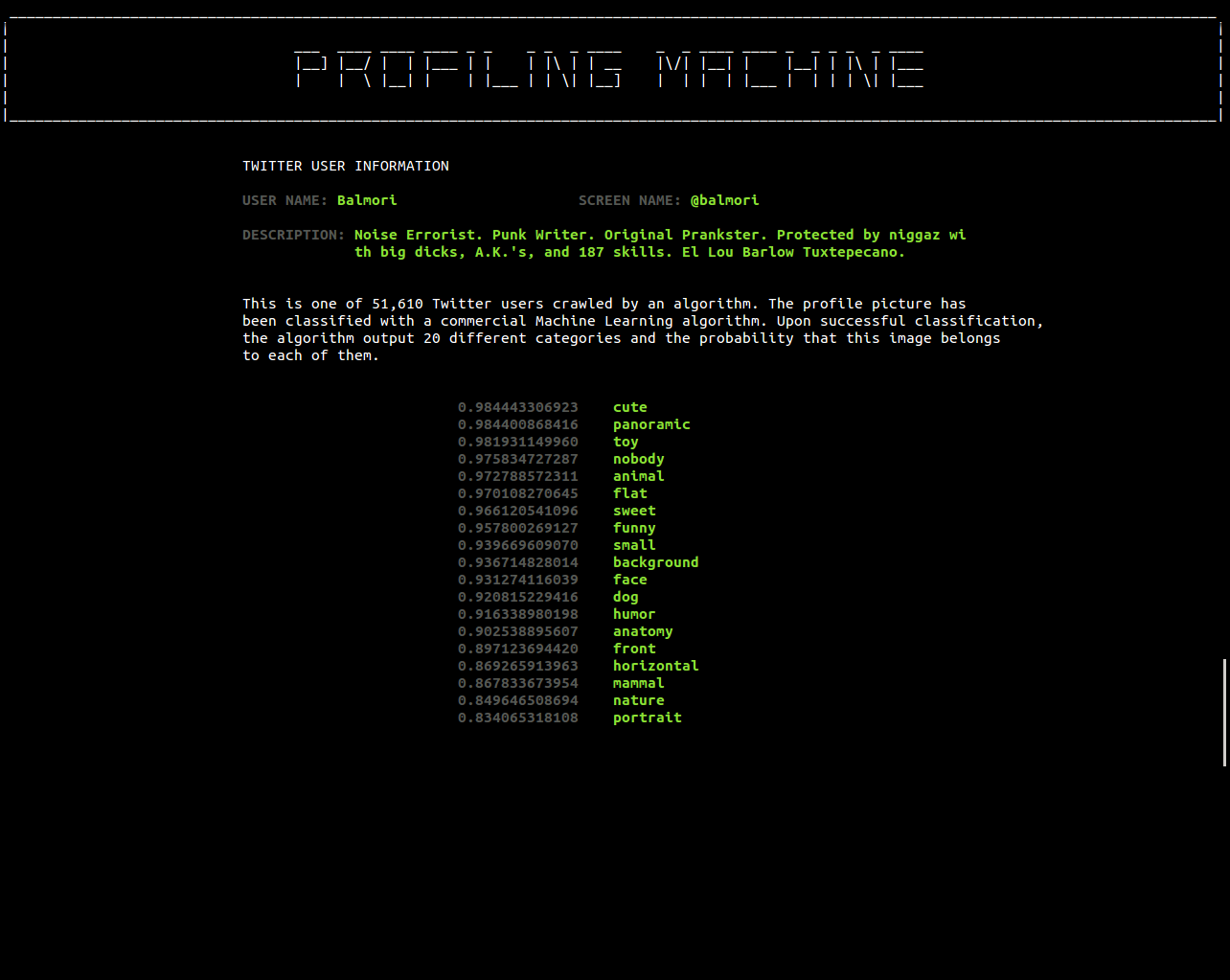
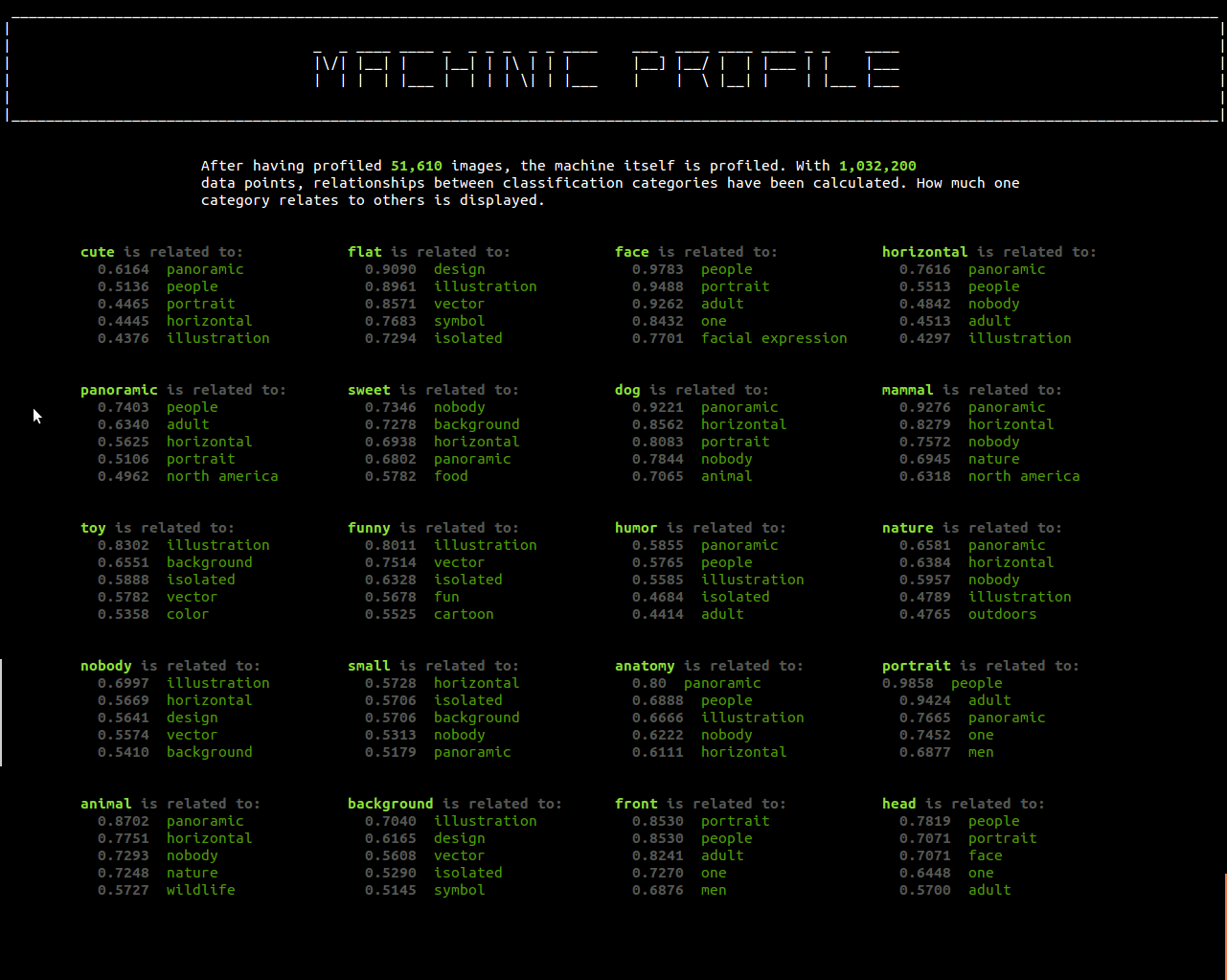

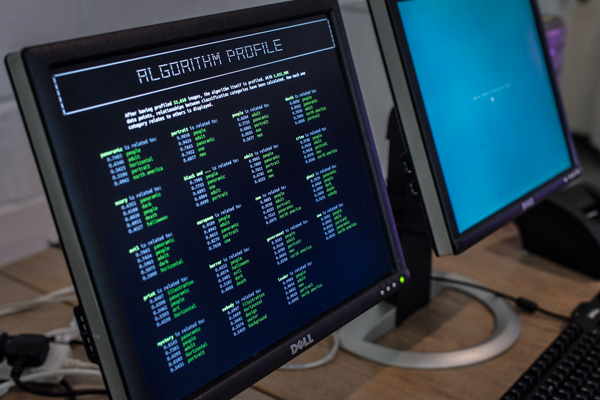
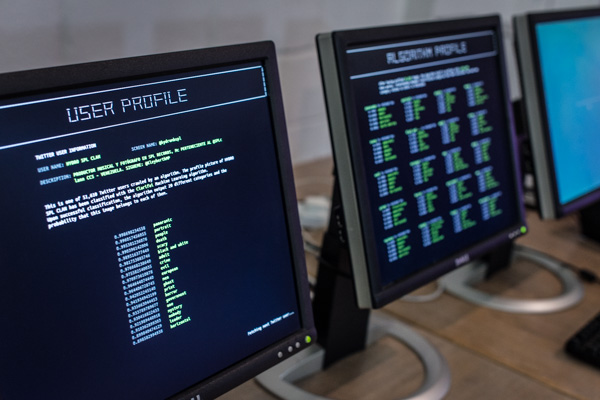

References
Elmer, Greg (2003). Profiling Machines: Mapping the Personal Information Economy. MIT Press.
Kitchin, Rob (2014). The Data Revolution: Big Data, Open Data, Data Infrastructures and Their Consequences. SAGE.

